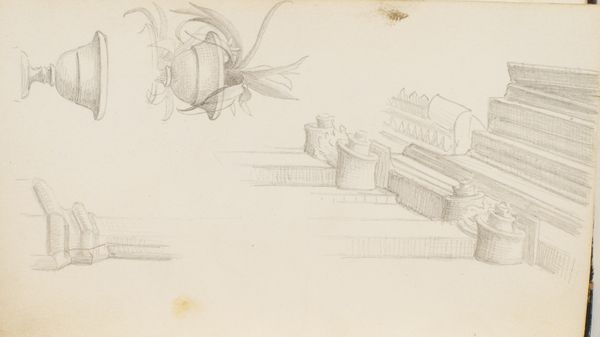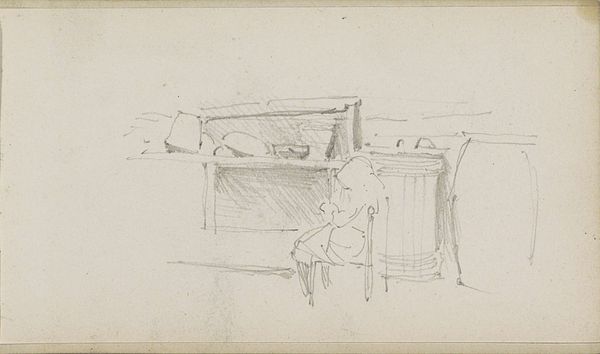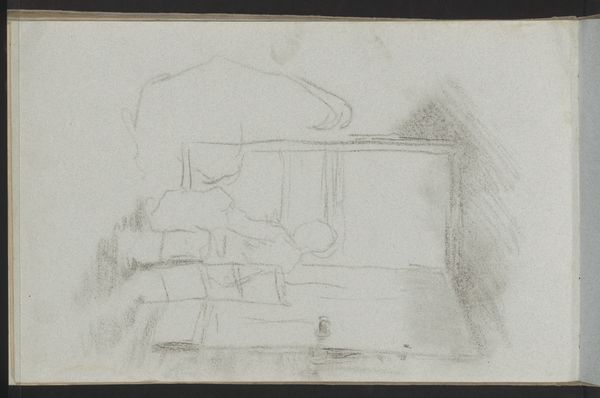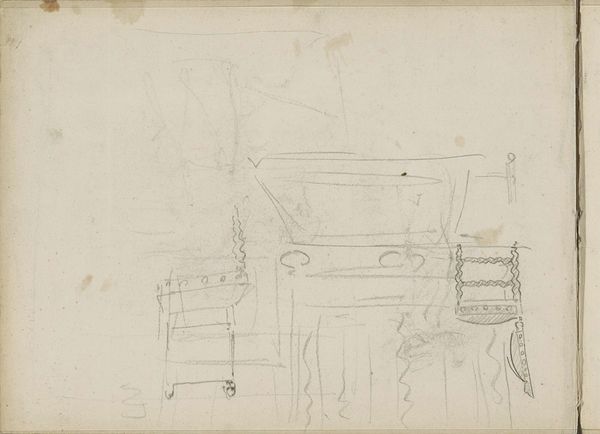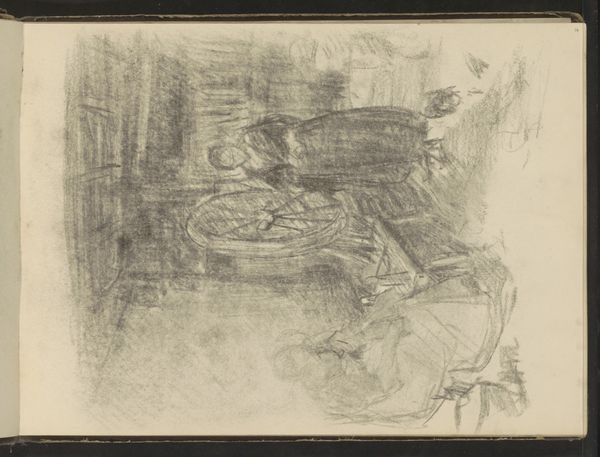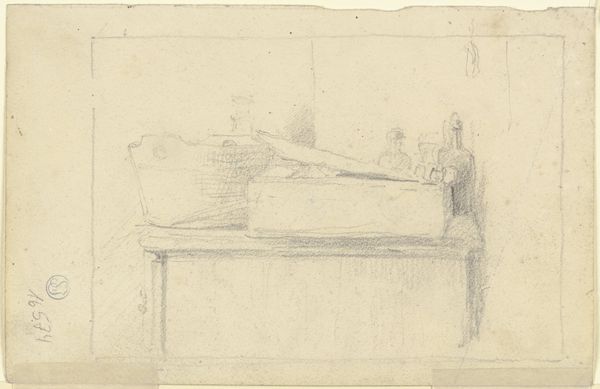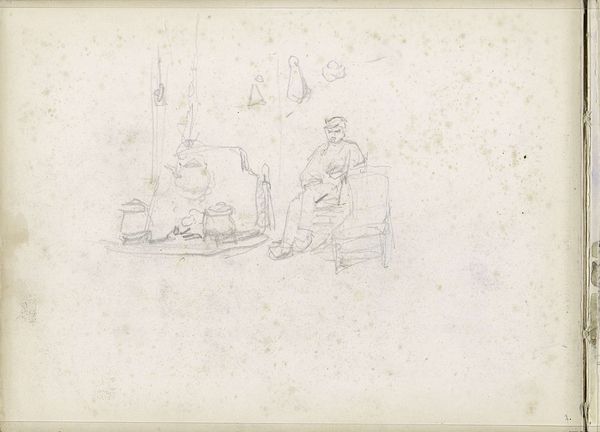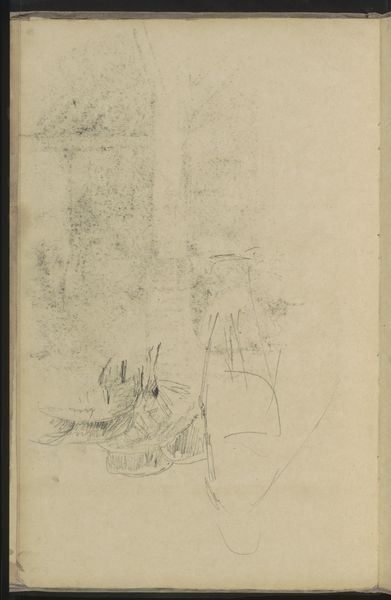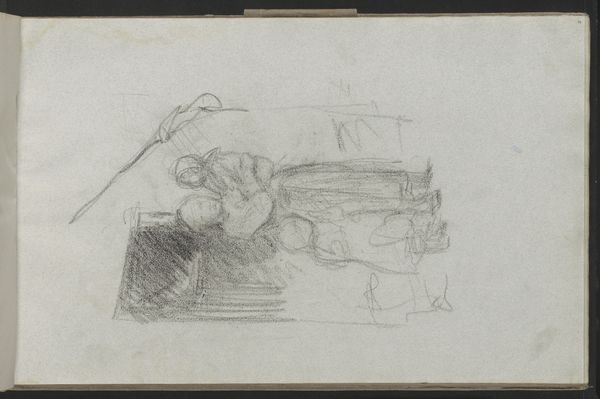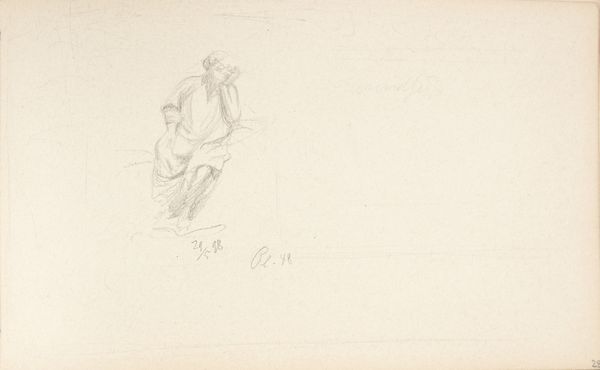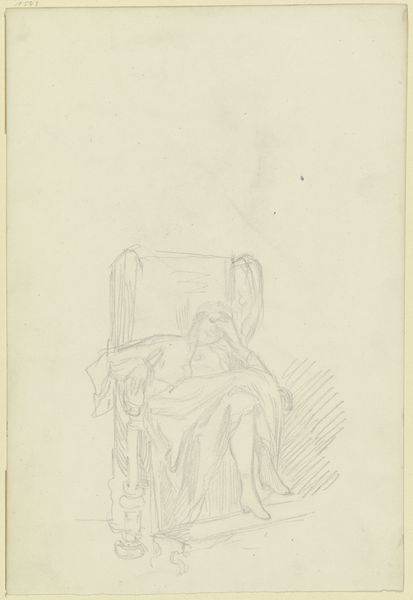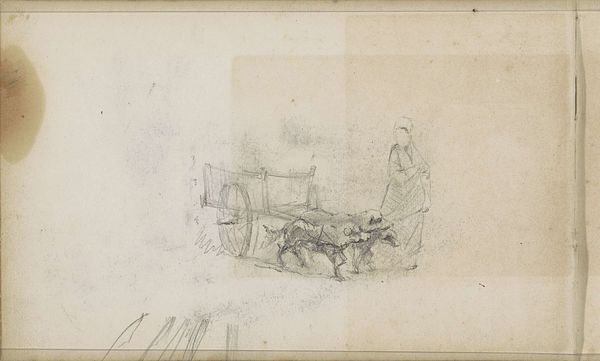![The Artist's Father and Objects on a Mantel [verso] by Paul Cézanne](/_next/image?url=https%3A%2F%2Fd2w8kbdekdi1gv.cloudfront.net%2FeyJidWNrZXQiOiAiYXJ0ZXJhLWltYWdlcy1idWNrZXQiLCAia2V5IjogImFydHdvcmtzL2IyNTc4ZDE5LTRjNjItNGZlYi1hODc1LWJhN2E0ZGE2YTUzZi9iMjU3OGQxOS00YzYyLTRmZWItYTg3NS1iYTdhNGRhNmE1M2ZfZnVsbC5qcGciLCAiZWRpdHMiOiB7InJlc2l6ZSI6IHsid2lkdGgiOiAxOTIwLCAiaGVpZ2h0IjogMTkyMCwgImZpdCI6ICJpbnNpZGUifX19&w=3840&q=75)
drawing, pencil
#
portrait
#
drawing
#
impressionism
#
pencil
Dimensions: overall: 12.5 x 22 cm (4 15/16 x 8 11/16 in.)
Copyright: National Gallery of Art: CC0 1.0
Curator: This pencil drawing by Paul Cézanne, likely created between 1877 and 1881, presents a domestic scene with the artist's father and objects on a mantelpiece. The verso of the artwork’s original physical copy also presents a study in composition and character, and that contributes to how we study art in similar form even to this day. Editor: The drawing gives me a rather melancholy feel. It's all so lightly rendered, almost ephemeral, yet there’s something about the clock and the figure that anchors the image in a specific, somewhat mournful moment in time. Curator: That melancholic sense might stem from the societal pressures placed on Cézanne himself, constantly negotiating his artistic ambitions with his father's expectations. This was painted during a time where fathers held financial control, something he had to manage along with social criticism from Parisian avant-garde circles regarding impressionism. Editor: Yes, you see that familial tension subtly playing out in the placement of objects. Notice how the solid clock face, almost a symbol of rigid paternal authority and traditional norms, looms close. While the father figure exists outside that, still clearly defined as a portrait, with the suggestion of transience rather than a rigid portrayal. Curator: The impressionistic style then serves as a critical device. By choosing loose sketches rather than refined portraiture, he rejects academic artistic convention in favor of a personal, immediate impression. It’s a quiet rebellion in the face of expectation. Editor: What stands out to me too are those vague vases; how those cultural tropes act as boundaries to the mantel. They frame this setting symbolically as a stage where societal tensions between patriarchy and emerging freedom are explored, the father and the artist forever bound together within that mantel's edge. Curator: Indeed. Looking back, this sketch allows us to trace Cézanne's evolving relationship with tradition, his family, and his role as an artist forging a new visual language. Editor: And it's a poignant reminder of the ever-present negotiation between our past selves and the innovative spirit yearning to break free. The beauty found on that edge is often underlooked in retrospect of this master painter.
Comments
No comments
Be the first to comment and join the conversation on the ultimate creative platform.
